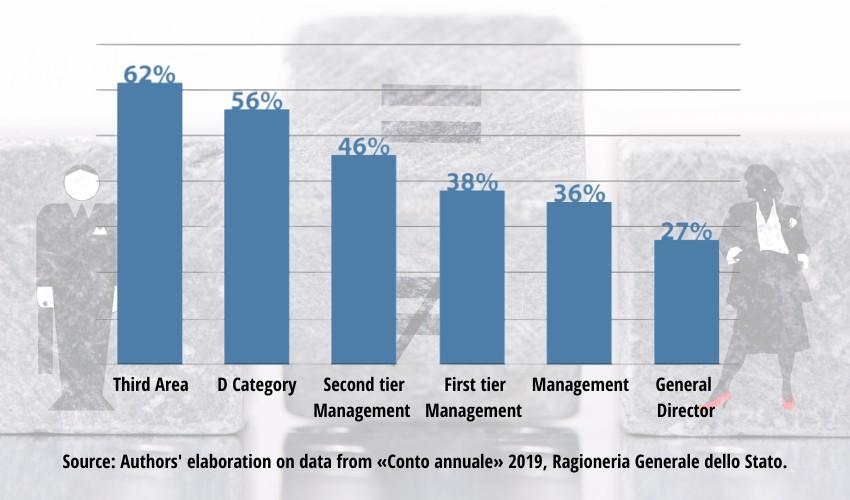
Gender Gap Emerges Also in the PA
WOMEN CONSTITUTE THE MAJORITY AMONG PUBLIC EMPLOYEES, BUT ONLY A MINORITY AMONG MANAGERS, ACCORDING TO A STUDY BY RAFFAELLA SAPORITO, SILVIA ROTA AND ELISABETTA TRINCHEROUnlike the private sector, women employed in public administrations are in the majority, more precisely 56% of the total number of employees in Italy and 58% in the OECD countries. However, even in public administration, women are still underrepresented in management roles.
Raffaella Saporito, Silvia Rota and Elisabetta Trinchero, Professors at SDA Bocconi School of Management, in a dossier published on Economia & Management, analyze the presence of women in the public sector and, in particular, the factors that facilitate or prevent women from advancing their careers in the public sector.
According to some statistics, in Italian central administrations, where management is divided into a first (highest) and a second tier, the proportion of women is 38% and 46% respectively, thus falling by eight percentage points when moving up to the highest tier. In other public administrations, where the General Director role is attributed to those who lead the entire body, the percentages of women are even lower and the gap between general direction and management is 9 percentage points.
The share of women by position

This gender gap in PA leadership roles poses an equity problem on several fronts. On one hand, internal equity, which suggests that a balance of inclusion and diversity within entities has not yet been reached. On the other hand, external equity: there is a shortage of female leaders who contribute to bringing complementary visions and demands to those of men, on crucial issues such as education and inclusion, health, and public ethics. It is therefore critical to narrow the gender gap.
According to the SDA Bocconi survey, the problem has cultural roots, as the study shows that prejudice is the main enemy of women's careers. Prejudice is not only from men towards women, but also from other women, who have little confidence in the potential of other women.
Although the problem is cultural, interventions to reduce the gender gap in leadership roles should be of various degrees. One measure suggested by Saporito, Rota and Trinchero concerns the design of the access systems to management, which should be more oriented towards the evaluation of the real capabilities of candidates, therefore revising the current selection system (the so-called concorsi in Italian) in order to not penalize those who, outside working hours, also carry out family care duties. Thanks also to the PNRR and the reform of the PA, progress is being made in this direction.
by Weiwei Chen
